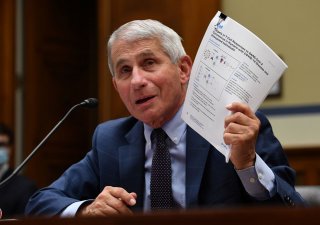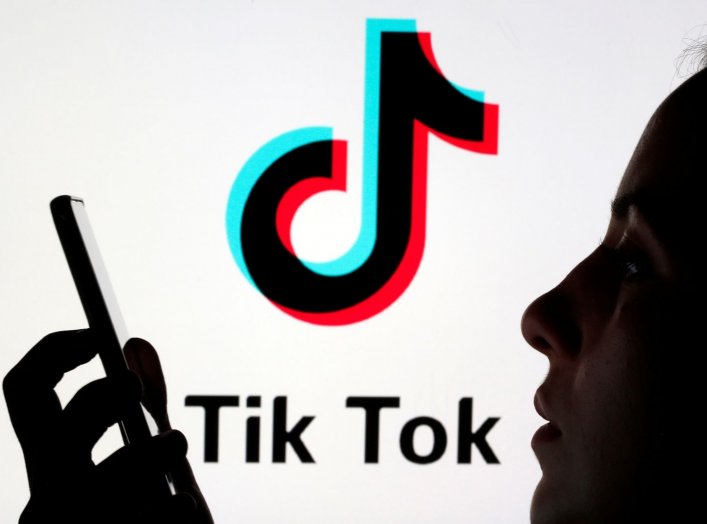
President Rodrigo Duterte has barred the Philippine military from joining naval exercises in international waters of the South China Sea, officials said Tuesday, indicating the Philippines wanted to avoid taking sides between China and the United States amid rising tensions in the region.
Presidential spokesman Harry Roque discussed Duterte’s stance on Tuesday, a day after Defense Secretary Delfin Lorenzana announced the order.
“The president has long had an independent foreign policy,” Roque told reporters. “We are friends to everyone and an enemy to none.”
“If what the superpowers are doing would result in increased tension, we will avoid joining them,” he said.
In recent weeks, China and the United States have conducted naval maneuvers and exercises in the South China Sea, while being embroiled in a war of words over the contested waterway after U.S. Secretary of State Mike Pompeo in mid-July declared Beijing’s sweeping claims there illegal.
Last month, the U.S. deployed two aircraft carriers, the USS Nimitz and the USS Ronald Reagan along with their strike groups to the South China Sea. The deployment, the first in several years, followed a Chinese military exercise around the disputed Paracel islands.
On Monday, Lorenzana revealed that Duterte had told the military to refrain from joining other countries, including the United States and Australia, in maritime drills in the sea’s international waters.
“President Rodrigo Duterte has a standing order to us, to me, that we should not involve ourselves in naval exercises in the South China Sea except our national waters, the 12-mile distance from our shores,” Lorenzana told reporters, according to Philippine media.
The defense secretary did not immediately respond to several requests for comment from BenarNews on Tuesday.
National address
During his annual State of the Nation Address last week, Duterte said he was “powerless” to enforce Manila’s sovereignty over disputed islands in the South China Sea. He added that China already occupied the islands and the Philippines could not counter Chinese aggression.
China occupies and has fortified islands in the South China Sea. China, Brunei, the Philippines, Malaysia, Vietnam and Beijing’s rival, Taiwan, have overlapping claims to maritime region.
Duterte’s speech came four years after the Hague-based Permanent Court of Arbitration ruled for Manila and against Beijing in dismissing China’s extensive claims to the sea region. Instead of enforcing the 2016 ruling, which was handed down a few weeks before he took office, Duterte set it aside in favor of closer ties with Beijing while distancing Manila from Washington, its traditional ally.
Over the past two weeks, Duterte said he had spoken recently with Chinese leader Xi Jinping, whom he said had promised that the Philippines would be among the first countries on the list to receive a COVID-19 vaccine, should one be developed.
Last week, China’s ambassador to Manila, Huang Xilian, said the two nations should not allow others to affect their relationship.
“China and the Philippines should not allow external powers to roil the waters in the South China Sea, nor waver [in] our commitment [in] pursuance of an independent foreign policy and China-Philippine friendly relations,” Huang told an online forum.
“The Philippines’ future will not float anywhere, but will be deeply rooted in its own national development, in a stable and amicable neighborhood, and in a peaceful and prosperous Asian region,” the envoy said in a statement posted on the embassy’s Facebook page on July 29.
Without naming another country, the ambassador said that a “superpower” was locked in a “cold-war mentality” and trying to suppress China in every possible way, as well as to “sow discord” among countries in the region.
Exercises with other nations
Later this month, the U.S. will be hosting a multi-nation exercise, Rim of the Pacific, near Hawaii, far from the South China Sea. A Philippine Navy ship has set sail to join the exercises.
In January, coast guard ships from the Philippines and China staged their first drill – an exercise involving rescuing victims after a ship caught fire in its cargo hold – in waters off Manila.
The next month, Duterte announced that the Philippines would terminate its 1999 Visiting Forces Agreement with the U.S. The bilateral pact has allowed large-scale joint military drills with U.S. forces, which defense analysts said were vital to the Philippines as it faces a challenge from China over claims in the South China Sea.
A month later, the U.S. said the COVID-19 pandemic had forced it to cancel the Balikatan exercise scheduled for May. The annual “shoulder-to-shoulder” military exercises normally draw thousands of troops from both nations along with Australian forces who have been invited to participate.
In June, Philippine Foreign Secretary Teodoro Locsin Jr. announced that his nation, in an effort to reinvigorate ties with the U.S. in light of the COVID-19 pandemic, was holding off on withdrawing from the VFA for at least six months.
The U.S. Embassy in Manila welcomed Locsin’s diplomatic note about the change.
“Our longstanding alliance has benefited both countries, and we look forward to continued close security and defense cooperation with the Philippines,” it said in a statement at the time.
Duterte Says Philippines Powerless over South China Sea Rights.

President Rodrigo Duterte told Congress on Monday he had no power to enforce his country’s ownership of territories claimed by China in the South China Sea.
Duterte made the statement during the annual State of the Nation Address, just two weeks after his foreign and defense departments backed a position by U.S. Secretary of State Mike Pompeo accusing China of bullying Southeast Asian countries.
Duterte said the nation could not afford to go to war over South China Sea territories.
“I am powerless there. I’m willing to admit it,” he said, suggesting that the conflicts were better treated as “diplomatic endeavors.”
“China is claiming it, we are claiming it. China has the arms, we do not have it. So, it’s simple as that. They are in possession of the property… So what can we do? We have to go to war. And I cannot afford it. Maybe some other president can. But I cannot.”
Duterte also cautioned against the United States returning to Subic Bay, a massive port north of Manila that was a U.S. military base before being shut down in 1992.
“If you put a base there at this time, this will ensure that if war breaks out – because there would be atomic arsenals brought in – this would (lead to) the extinction of the Filipino race,” he said.
It was not immediately clear why Duterte spoke of a military base. U.S. and Australian companies have mounted a joint effort to purchase and potentially set up a naval repair facility at Subic, following the bankruptcy of the South Korean shipbuilding company that ran the Subic Bay Freeport Zone.
The U.S. embassy in Manila did not comment when contacted by BenarNews.
Duterte, who has been drifting toward strengthening relations with China since he assumed power in 2016, said Manila would “continue to pursue an independent foreign policy.”
“Neither beholden nor a pawn to anyone, we broaden the boundaries of Philippine diplomacy, we develop productive ties with everyone willing to engage us on the basis of equality and mutual respect,” he said.
A plea to President Xi
The statement came two weeks after Pompeo announced a tougher a stance against China, accusing Beijing of trying to build a “maritime empire” in the South China Sea.
“We are making clear: Beijing’s claims to offshore resources across most of the South China Sea are completely unlawful, as is its campaign of bullying to control them,” Pompeo said in July 13 statement.
He spoke as the Philippines marked the fourth anniversary of the July 12, 2016, decision by The Hague-based Permanent Court of Arbitration that junked China’s claims to the South China Sea.
Duterte has not enforced the ruling and instead aligned himself with China despite his country’s defense treaty with the U.S., which once based its largest overseas military installations north of Manila.
Satellite imagery and vessel tracking data shows a China Coast Guard vessel has been patrolling Scarborough Shoal since July 20. The shoal is claimed by the Philippines and sits on the Philippine continental shelf. In addition, vessel tracking data shows a Chinese survey ship was within 200 nautical miles of the Philippine coast on July 21.
On Monday, Duterte said he spoke with his Chinese counterpart and asked to be among the first countries to have access to a COVID-19 vaccine being developed by Beijing.
“Four days ago, I made a plea to President Xi Jinping that if they have the vaccine, can they allow us to be one of the first, or if needed, we have to buy it,” Duterte said.
He appealed to the public to cooperate in battling the coronavirus, saying it had wreaked havoc on the economy even as the country had appeared to “withstand the headwinds” of the virus.
“Let me say that the strength of a nation rests in the hands of the people acting as one with government in the pursuit of common goals and objectives,” Duterte said.
The Philippine health department reported 16 deaths and 1,657 new COVID-19 cases on Monday, bringing the totals 1,945 and 82,040. Globally, nearly 16.3 million have contracted the coronavirus and nearly 650,000 have died, according to disease experts at U.S.-based Johns Hopkins University.
Protesters rally at the University of the Philippines in Manila to denounce policies by President Rodrigo Duterte, July 27, 2020. [Luis Liwanag/BenarNews]
Protests
Duterte spent a portion of his speech commenting on ABS-CBN Corp., the television network that his allies in Congress recently voted to shut down. The network has been critical in reporting on the government.
“That happened after the [House] Committee on Franchises voted 70-11 to deny the grant of franchise to ABS-CBN,” Duterte said. “Great wealth enables economic elites and corporations to influence public policy to their advantage,” he said.
Duterte said the family that owns ABS-CBN had used it in “battles with political figures.”
“I am a casualty of the Lopezes during the 2016 elections,” he said, referring to an incident when ABS-CBN apparently did not air his political ads during the presidential campaign.
He warned other business owners he would take over vital services if they did not shape up.
“For the remaining two years of my term, all that is good that belongs to government, whether it be airwaves, lines or whatever that is good for the people, will belong to the government,” Duterte said.
Meanwhile, hundreds of activists joined a protest in Manila ahead of Duterte’s address. The fishermen’s group Pamalakaya criticized the president for his defeatist stand on the South China Sea, but said it was expected.
“Asserting what is ours does not mean declaring war with the aggressor,” said Fernando Hicap, a Pamalakaya leader. “Mr. Duterte should be reminded over and over that we have all the legal, political and historical claim over our exclusive economic zone being robbed by China.”
Other protesters carried signs and banners denouncing Duterte’s policies including the new anti-terror law they warned could be used against critics denouncing his drugs war that has left thousands dead.
A protester posted an “oust Duterte” message on his face shield during a rally at the University of the Philippines in Manila, July 27, 2020. [Basilio Sepe/BenarNews]






![A protester posted an “oust Duterte” message on his face shield during a rally at the University of the Philippines in Manila, July 27, 2020. [Basilio Sepe/BenarNews] A protester posted an “oust Duterte” message on his face shield during a rally at the University of the Philippines in Manila, July 27, 2020. [Basilio Sepe/BenarNews]](https://www.benarnews.org/english/news/philippine/annual-address-07272020153033.html/200727-PH-duterte-end.jpg)

